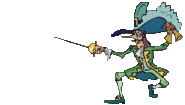Northern Shaolin and Fencing:
A Brief Comparative Analysis
by Michael Liem
Copyright February 2003 (All Rights Reserved)


Introduction.
I am currently studying Northern Shaolin kung fu, actually a composite system that includes some basic longfist forms and complete systems such as Tan Tui, Hua Quan, Yang family Taiji Quan and Kuang Ping long-form Taiji Quan, Xing Yi Quan(Hsing I Ch'uan) and Ba Gua Zhang (Pa Kua Chang) as well as numerous traditional kung fu weapons. My teacher is
Sifu Al Bender Jr. in Bloomfield, New Jersey. I have been competing in tournaments regularly since 1998 and have placed several times, including first place in adult novice forms division at Rick Faustini's Fall Classic 1999 in Oradell, New Jersey, and more recently 1st place in both the adult intermediate weapons division and empty-hand forms at the Garden State Games 2001 and 1st place in the adult forms division at Rick Faustini's Spring 2001 Classic. I also took 2nd place in intermediate and advanced weapons division in the Garden State Games April 2002, and 1st place in black belt weapons division in Sensei Keenan Winterfield's Invitational tournament in April 2002. I now serve as assistant instructor.
I have also studied classical fencing and historical swordsmanship under Maestro Ramon Martinez, particularly French foil, Italian rapier & dagger, French smallsword, and Italian sabre. I have also been competing in fencing and swordsmanship tournaments since 1998. I landed fourth place in my first foil tournament in late 1998.
I find that my studies of kung fu and fencing complement each other effectively. My study of each art seems to help improve my progress in the other. To name a few examples:
- Both styles are relatively "soft" arts, in comparison to other martial arts such as karate and taekwondo.
- Both arts emphasize full body extension for achieving maximum distance and momentum.
- Both emphasize realism in preparing for life-and-death situations. (This statement is not meant to apply to the modern Olympics-style fencing, which is more commonly practiced today.)
- Both arts teach self-defense, mental and physical self-control and discipline, fitness, body mechanics, etc.
- My fencing master has studied various forms of kung fu with avid interest, which enables him to help me better understand his teachings by relating to my kung fu experience.
There are of course key differences and contrasts. For instance:
- Kung fu emphasizes establishing stance prior to executing a technique (the "stance-before-strike" principle of Shaolin), for maximum balance, power, and ch'i (i.e., a Chinese term meaning energy that the body harnesses through breath, body mechanics, concentration and intent). Fencing teaches one to extend the point of one's weapon toward the target first, then execute one's footwork into the attack.
- Kung fu, at least as my Sifu teaches it, emphasizes learning through forms, i.e., patterns of pre-set movements that teach self-defense applications, while fencing emphasizes learning by actual fencing, or at least fencing drills, with a partner.
- The Shaolin philosophy of combat "realism" is not holding back when executing an attacking technique, as one might be inclined to do in a sparring match or practice drill with a partner, for safety reasons. The European classical/historical fencer's philosophy of combat "realism" is approaching a fencing match as though your and your opponent's weapons were sharp, and tailoring your tactics and technique accordingly.



